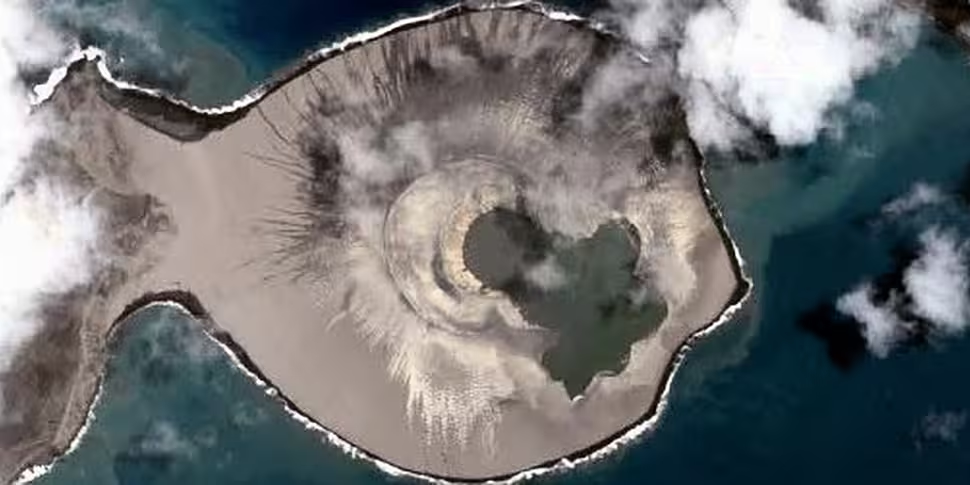Details have emerged of a new island, which has formed after a volcanic eruption in the Pacific Ocean.
In late December 2014, a submarine volcano in Tonga exploded - sending steam, ash and rock into the air.
The ash plumes rose as high as 30,000 feet into the sky, causing flights to be diverted.
When the ash finally settled in January 2015, a newborn island with a 400-foot summit was nestled between two older islands.
The island is visible to satellites in space.
The Tongan island, unofficially known as Hunga Tonga-Hunga Ha'apai, was initially projected to last a few months.
Now a new NASA study says it should last between six to 30 years.
Hunga Tonga-Hunga Ha'apai is the first island of this type to erupt and persist in the modern satellite era.
View from the top of tuff cone of the new Tongan island, June 2017 | Image: NASA/Damien Grouille/Cecile Sabau
Understanding Mars
NASA says it gives scientists "an unprecedented view from space" of its early life and evolution.
The new study offers insight into its longevity and the erosion that shapes new islands.
Remote sensing specialist with NASA, Dan Slayback, says: "Those cliffs of volcanic ash are pretty unstable".
He says wave action then redistributed the eroded sediment to form a land bridge to the existing island to the east.
In May, the southeastern rim of the interior crater wall was washed over by the Pacific Ocean, opening the crater lake to the ocean.
At this point scientists thought this might be the end of the island.
But by June, satellite imagery showed that a sandbar had formed, closing off the crater.
While the island continued to evolve, it was more stable by late 2016.
NASA says: "Understanding these processes could also provide insights into similar features in other parts of the solar system, including Mars."
Jim Garvin, chief scientist of NASA's Goddard Space Flight Centre, says: "Everything we learn about what we see on Mars is based on the experience of interpreting Earth phenomena.
"We think there were eruptions on Mars at a time when there were areas of persistent surface water.
"We may be able to use this new Tongan island and its evolution as a way of testing whether any of those represented an oceanic environment or ephemeral lake environment."










